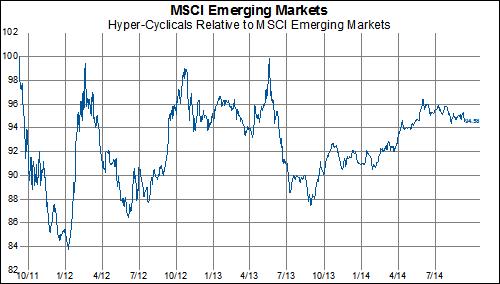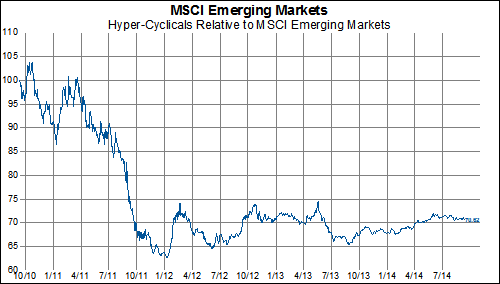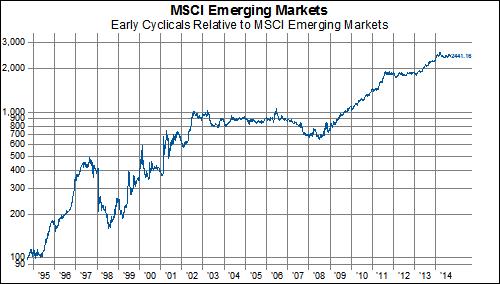Until just a few days ago EM stocks were on the verge of being "overbought" by this brute metric, which we viewed as an odd phenomenon given the strength of the dollar and weakness in commodities. We mentioned here and here how the strong dollar and weakness in commodities can affects EM stocks, to their detriment.
In any case, it appears that EM stocks are now catching wind of the trend higher in the dollar and lower in commodities. In the two charts below we plot the percent of stocks in the MSCI EM Index that are trading above their 200-day moving average (blue line, left axis). In the first chart we overlay the Nominal Trade Weighted USD Index (red line, right axis, inverted). In the second chart we overlay the CRB Index (red line, right axis). In both cases we observe a very close relationship between the variables (an inverse relationship with the USD in the first chart and a positive relationship with commodities in the second). Thus the breaking out of the dollar and the breaking down of commodities may signal that EM stocks might be ripe for taking a breather, and that more EM stocks may soon be trading below their 200-day moving average.



















































